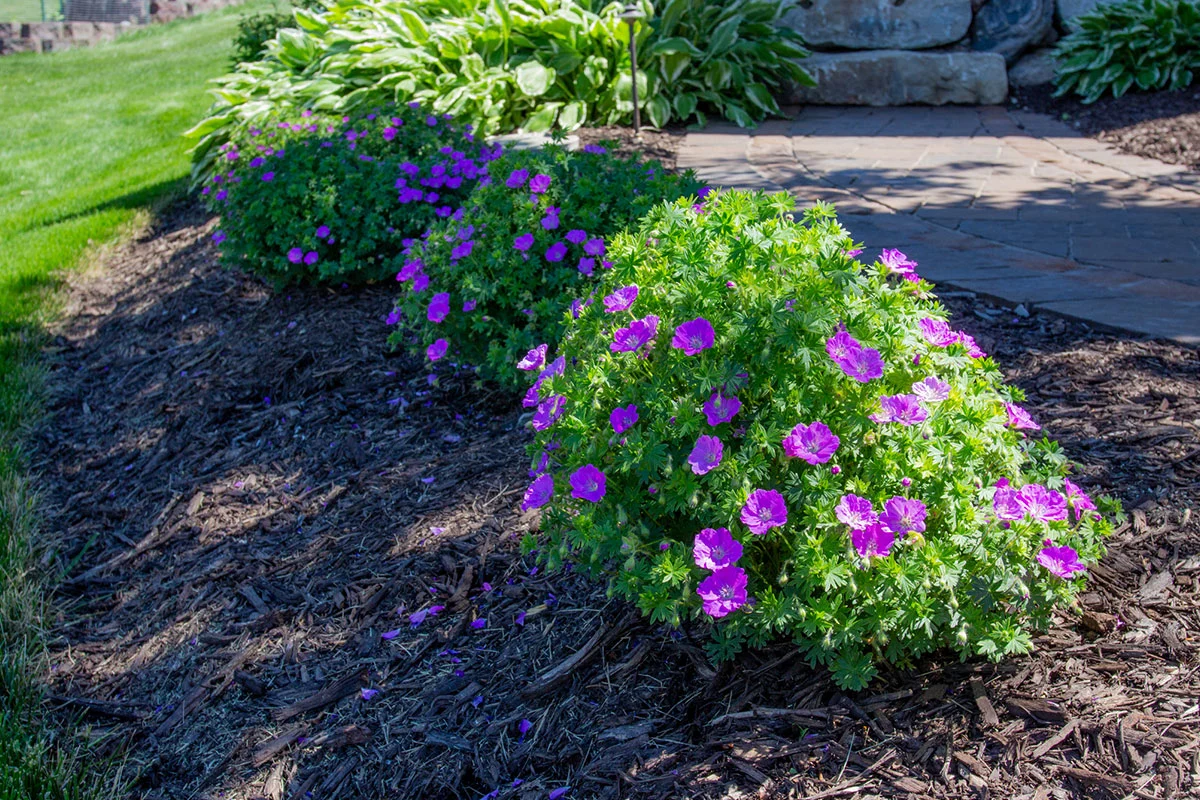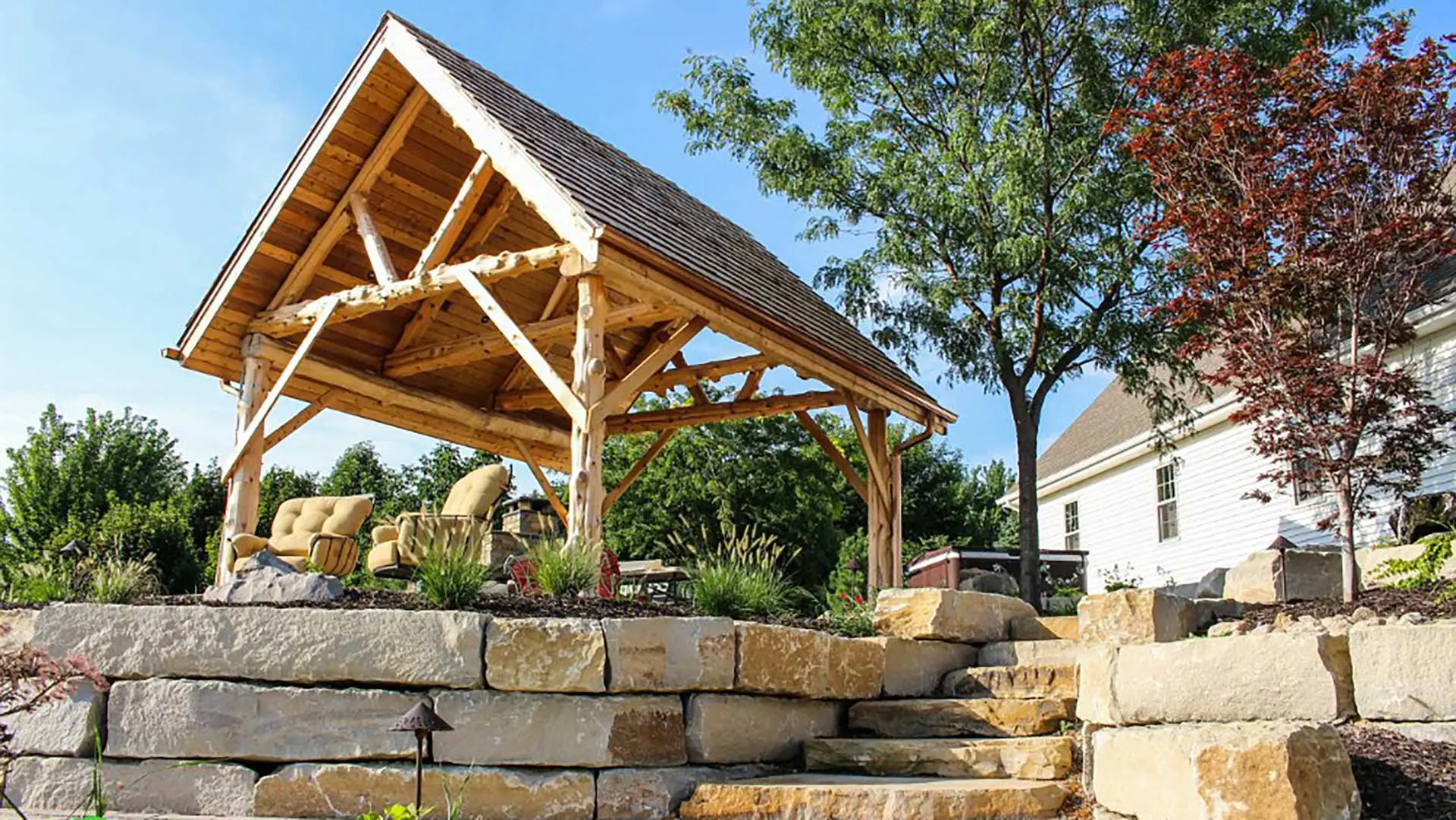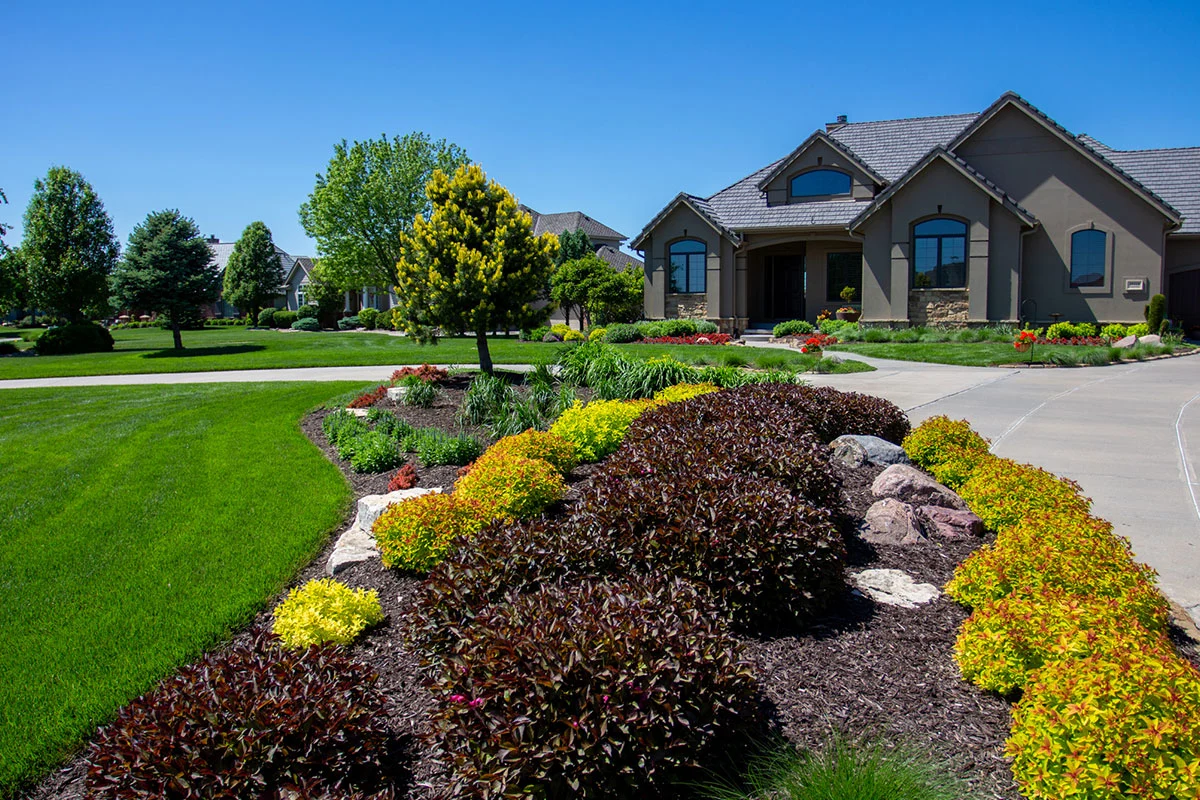Blooming flowers can make even the worst spot in your yard look extraordinary. Vibrant colors, lush green foliage, and climbing vines each have their way of adding to your landscape. Dark, dull corners can be lightened up with a bright pop of color. Privacy can be provided with a trellis and a beautiful flowering vine, and adding greenery to your containers makes them appear much fuller and grander.
So many types of flowers and plants can be incorporated into your landscape plan. Perennial plants and shrubs return year after year and are often placed in more permanent landscaping beds. Some will flower when it is their season, but most perennials do not maintain their color from Spring through Fall. This is when annuals come to the rescue. Annuals are not hardy enough to survive the cold winter seasons, so they must be planted annually (hence the name annual.) This may seem like extra work, but your efforts will long be forgotten when your house has the best yard on the block.
How do you know which annuals to plant and when to plant them? Going to the local nursery or big box store and seeing all the plants can be overwhelming. You have to read those tiny cards in the pot (with even tinier writing) to figure out how much sun they need, how tall they get, and which fertilizer they like. This article will not necessarily prevent you from needing to read that really small print, but it will give you some basics, so when you see a plant name, you will understand how it may fit into your plan. Here are a few annuals you may want to add to your plan and when to get them planted.
Early Spring Planting
You may be tempted to begin planting around your home when the first few warm days of Spring appear. The ground may be warming, but many flowering annuals cannot withstand a frost should you get one (which is likely.) If you need color in your life from the long dreary winter, here are a few annuals you could plant as early as March to get your yard started.
-
Flowering Kale – Not only is this plant a superfood, but it adds loads of gorgeous color to your landscape. You can choose from many varieties, most tolerating below-freezing temperatures.
-
Pansy – You can fill several pots around your home with pansies that will give you color all summer. They are quite hardy and will tolerate a frost with little to no issues. They will provide the vibrant yellows, blues, and purples needed to welcome Spring.
-
Phlox – There are different varieties of phlox, some of which are perennials that return each year and others that are actually annuals but reseed and come back again the following year. Not all varieties will handle colder temperatures, so read your label to know for sure.
-
Snapdragon – Florists love the first Spring snapdragons, which look stunning in a vase of fresh-cut flowers. Their vibrant colors, tall stalks, and fluffy heads add much interest to your landscaping beds or a container. They will often tolerate a light frost, but bringing them closer to your house may be best if the temperatures are dropping.

Late Spring into Summer Planting
This is when the soil has warmed significantly, and the last frost is likely behind us. For those in Zone 5 or lowers, this is typically around the end of May, but some risk-takers may decide planting in the middle of May is worth the risk! The plants you put into the ground or containers now will quickly take off and begin blooming. When well taken care of, these will continue adding color to your home well into the Fall. Here are a few staples to consider adding to your landscape plan.
-
Geranium – Add these to your containers for height, vibrant color, and greenery from one plant. They come in shades of bright red, pink, and white. Cutting back the dead flowers will keep them blooming all summer.
-
Impatiens – No summer planting list would be complete without impatiens. These are among the most popular annual flowers because they keep going. They will thrive almost anywhere from the sun to shade and provide you will lots of colors.
-
Morning Glory – Give this beauty a trellis, which will climb high for you. Its tendrils will attach and climb as high as 10 feet, and its trumpet-shaped flowers come alive in the full sun. It’s a great way to add height to your landscape or provide privacy.
-
Petunia – Petunias are famous for container planting. They come in a wide variety of colors, some offering striped or variated color schemes. If you keep them deadheaded (picking off the dead blooms), they will give you color well into the fall.
-
Stock Flower – This is the one if you are searching for vibrant colors on graceful plants. Stocks come in so wide varieties from short to tall, red to purple, and all parts are edible. You can enjoy them in the garden or prepare them in a lovely salad since they are part of the cabbage family.
-
Sunflower – Sunflowers give their best show in the last summer into early fall. You can enjoy watching them get higher and higher as the summer unfolds. Once they form their flowering heads, they will continue giving you beautiful colors well into the fall. You can eat their seeds or leave them in place for the birds to enjoy all winter.
There is much work involved in planting flowers each year. If you would rather enjoy the flowers but skip the work, the crew at Groundscapes can help you get your plants started so you can enjoy their blooms. Contact us to get started.













Comments (0)
Thanks for your comment!
Thanks for your feedback! Your comments have been successfully submitted! Please note, all comments require admin approval prior to display.
Error submitting comment!
There is a problem with your comment, please see below and try again.